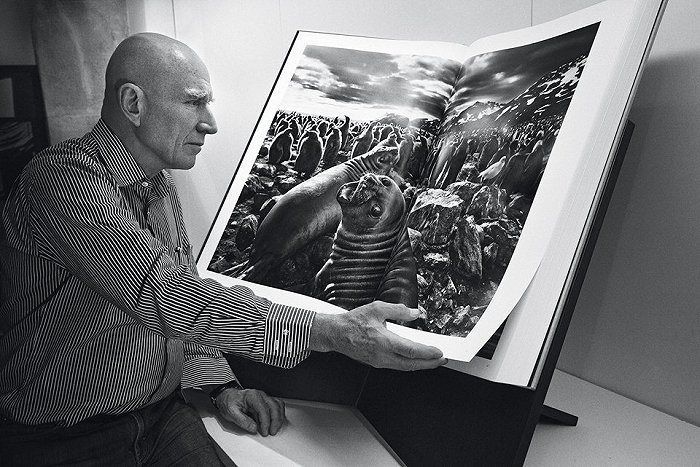By Moon, Jointing.Media, in Shanghai, 2025-06-13
Recently, a mint-colored plastic Labubu figurine was sold for 1.08 million renminbi (RMB). Last month, the most expensive Chinese edition of the photographic works by Sebastião Salgado, the late documentary photography master who passed away in Paris at the age of 81, was priced at 39,800 RMB.
This collection of photographs is a limited-edition volume from the “Genesis” series. It was completed over eight years and features images from 32 global expeditions, with the goal of documenting the pristine landscapes of the Earth that remain untouched by modernization. The hardcover edition of the photo album was designed by Japanese architect Tadao Ando. It includes a Spanish handmade cherry wood bookshelf and features Italian printing and binding. The collection is available through a limited global release.
On one side lies the frothy, capital-driven frenzy of the trendy toy economy; on the other, the quietly contemplative gaze of documentary images. On one side, there is the fleeting noise; on the other, the grains of salt that penetrate through time.

PIC: Sebastião Salgado and “Genesis”
While Labubu was sparkling at the auction house, Salgado’s black-and-white images were on display at the Shanghai Natural History Museum. This photographer, born in 1944 on a small farm in Brazil, has lived an epic life. Holding Ph a.D. in economics, he resolutely gave up his high-paying position at the World Bank at the age of 29 to embark on a career in photography, armed with a camera gifted by his wife. “Every photograph is my confession to the world,” he wrote in his autobiography. To capture the reflection of scales on the claws of a marine iguana, he lay in wait for days; to document the migration of the Nenets people in Siberia, he trekked for 47 days in temperatures as low as -45 degrees Celsius; to photograph the famine victims in Ethiopia, he walked 850 kilometers into dangerous territory, revealing to the world how those “symbolized statistics” become real, human faces.
“A true photographer must become part of the event, not just an observer,” Salgado realized in 1986 while photographing the Sahel famine. While other journalists came and left after taking their shots, he stayed with the famine victims for two weeks, sharing their food and shelter. The resulting photograph of a mother nursing her skeletal child led to a threefold increase in UN relief supplies. This level of commitment nearly cost him his life—he contracted malaria in Congo and was hit by shrapnel in Chechnya—but he never shrank back: “If my photos do not make people sleepless at night, then they are worthless.”
Meanwhile, in luxury boutiques, crocodile-skin bags are priced at three million RMB, rosewood furniture sells for over one million RMB, and Patek Philippe watches start at tens of millions of RMB at auction… Luxury in itself is not a sin, but when consumption becomes a worship of symbols, the soul is trapped in a golden cage.
In a lecture, Salgado once warned young photographers: “Do not pursue beautiful compositions; pursue the weight of truth.” When photographing famine victims, he did not use a telephoto lens to look down but instead met their gaze at eye level to convey dignity. He rejected a lucrative offer from National Geographic simply because the editors asked him to “increase color saturation to attract more readers.” “My reputation is built on the suffering of others; if ambition exceeds compassion, I lose my soul.” This soliloquy reveals the true value standard of art.
Translated by Kimi(AI)
Edited by Jas
Related:
Sebastião Salgado
Brazilian photographer Sebastião Salgado dies at 81, leaving behind a monumental legacy

![[Recruiting 2011] Jointing.Media](http://jointings.org/eng/wp-content/themes/news-magazine-theme-640/cropper.php?src=/cn/wp-content/uploads/2012/06/123.png&h=50&w=50&zc=1&q=95)









